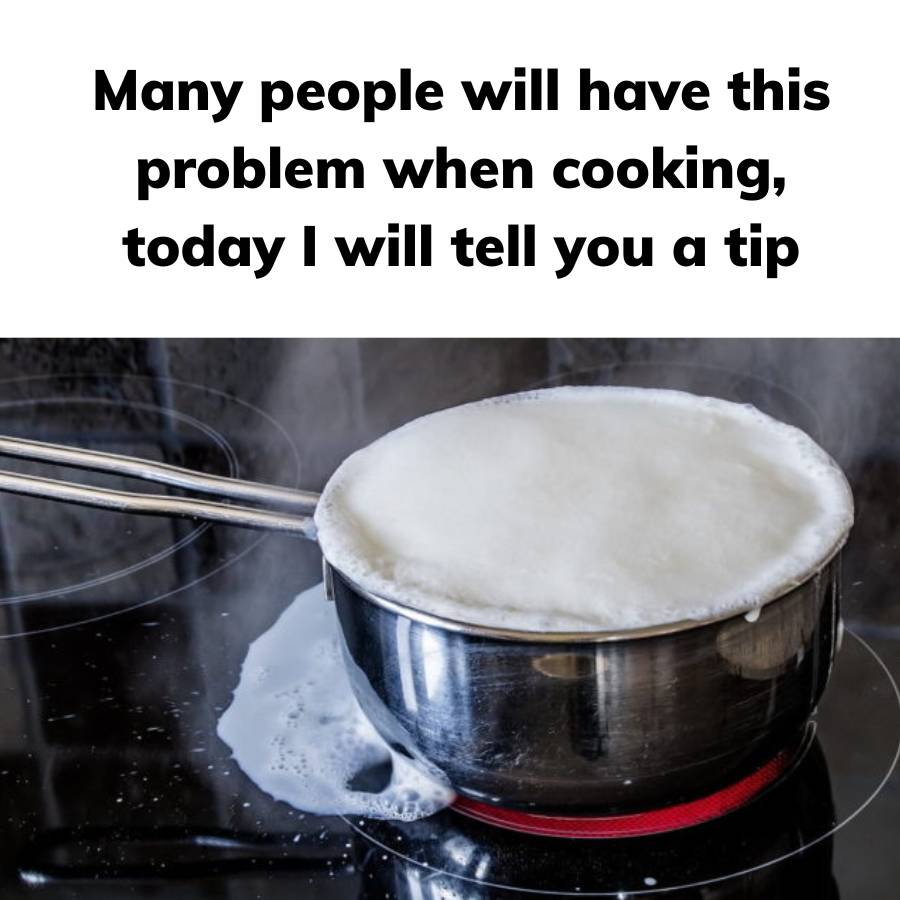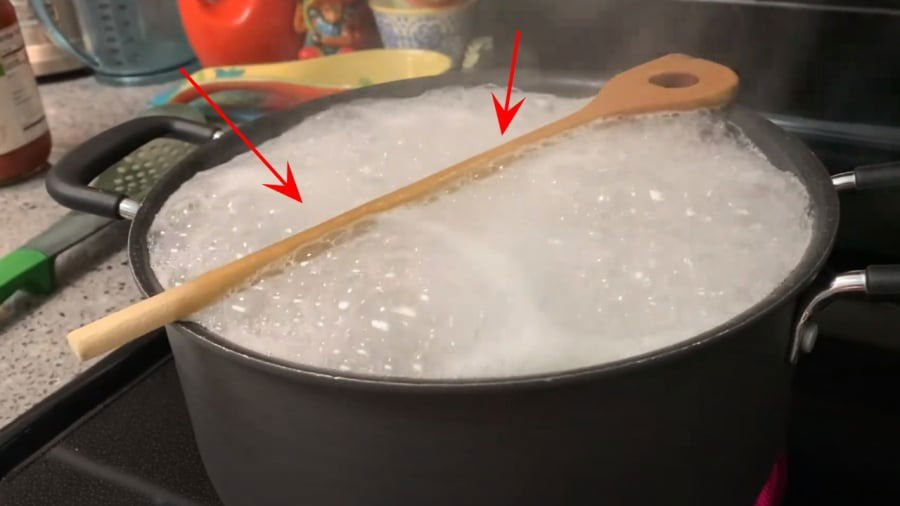
When cooking water and food, even a minor interruption might result in “bitter consequences” as they boil vigorously and overflow, causing a mess. Cleaning will need a significant amount of effort. However, by following the advice below, you will be more proactive in an emergency boiling water situation, reducing the phenomenon of water overflowing from the pot.
A pot of bone broth, a pot of crab soup, soy milk, corn milk, porridge, or even a pot of boiling water… anything related to water, when cooked on the stove, has the potential to overflow and spill all over the place. Even if you notice it early and open the lid when the pot begins to boil vigorously, the water will continue to overflow until you totally turn off the fire.
Many housewives are haunted by this because if water or food falls onto the stove as a result of over-boiling, the cleaning and cleaning process is exceedingly exhausting. Not to mention how much trash is created when food overflows.
Why does boiling water overflow the pot?
Water always contains dissolved air. When you cook something and approach the boiling point, the temperature gradually rises, reducing solubility and causing the hot water to rapidly and violently convert from liquid to gas. When we heat water, steam (gas) forms within the liquid, causing bubbles. The gas will escape from the pot wall to the water’s surface as the temperature rises.
Initially, the steam will create little air bubbles. When the water hits boiling point, these steam bubbles will join together to become large enough to rise to the surface. They will continue to expand, always escaping from the water’s surface and unable to accumulate in the water. This situation will persist till they overflow the pot.
Using the same mechanism, the amount of steam will be continuously released until it is dry. This is why, with a little distraction, you may spend the entire day cleaning the kitchen and scrubbing charred pots.
So, how do you keep boiling water from overflowing the pot? Follow this simple method.
Place a wooden ladle or spoon across the lip of the pot.

When the water is about to boil, open the cover and put a wooden ladle, spoon, or utensil across the opening of the food pot. This is regarded as a bizarre yet highly efficient tip with a solid scientific foundation. This is explained as follows:
Wood is intrinsically fearful of water since it does not absorb it readily. When bubbles fill the pot, they will continue to develop and expand until they overflow and finally disintegrate. However, the wooden ladle prevents this by breaking the surface of the bubbles in the pot, keeping them from growing and overflowing. When water comes into contact with something that repels water, it will “retreat” itself. Bubbles that are no longer supported by water will rupture before they may grow in size and overflow.
However, it is worth noting that wooden spoons are only hydrophobic when they are somewhat dry. When water spills close to the pot’s surface and comes into contact with the spoon, it becomes wet, can absorb water again, and loses its effectiveness. At this point, bubbles continue to form and may overflow again.















